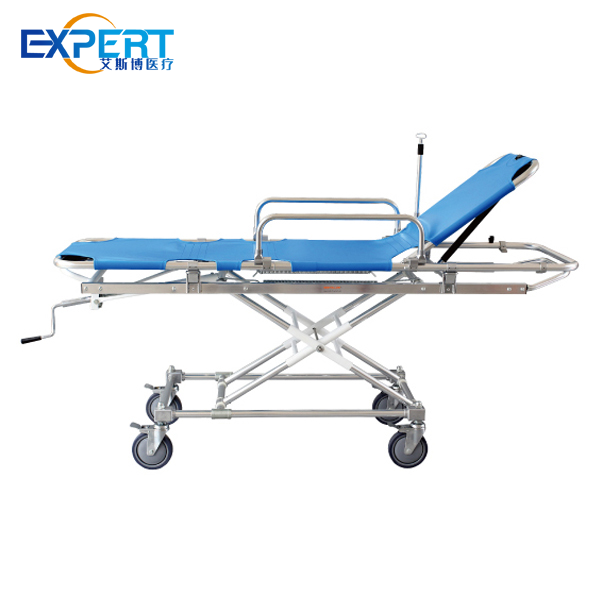Indirizzo
304 Il cardinale nord S.
Dorchester Center, MA 02124
Ore di lavoro
Dal lunedì al venerdì: 7:00 - 19:00
Fine settimana: 10:00 - 17:00

The size and design of barelle con carrello used to transport patients can have a significant impact on patient comfort, safety, and the ergonomics of healthcare workers. This blog post will examine how stretcher trolley size affects various patient populations and usage scenarios, discuss safety and economic considerations, and provide recommendations for optimal stretcher trolley sizing. Critical factors like patient weight capacity, height adjustments, and maneuverability will be explored in depth.
When determining appropriate stretcher trolley sizes, key factors include:
Common Stretcher Trolley Sizes and Attributes:
| Dimensione | Capacità di peso | Height Range | Wheel Size |
|---|---|---|---|
| Compact/Narrow | Up to 700 lbs | 16-31 inches | 5-8 inches |
| Standard | 400-1000 lbs | 17-32 inches | 8-10 inches |
| Oversized/Bariatric | 700-1500 lbs | 17-26 inches | 10-12 inches |
Patient comfort is largely influenced by the stretcher’s dimensions and capacity to handle their height, weight, and mobility restrictions:
Ensuring the right stretcher size is like getting the right-sized wheelchair—it greatly impacts comfort during a stressful transport or procedure.
The size of the stretcher has a big effect on patient safety during transfers and transport:
The stretcher model must suit the patient and use environment to minimize safety issues.

While stretcher trolley size has clinical impacts, it also influences costs:
Choosing the correctly sized stretcher improves safety and productivity, saving money long-term through reduced injuries and efficient patient flow.
So what is the ideal stretcher size? Recommendations include:
Following these stretcher sizing guidelines provides the adaptability to safely serve any patient situation with proper ergonomics.
In conclusion, stretcher trolley size has a profound impact on patient comfort and clinical safety during transport and transfers. Additionally, the correct sizing plays an economic role by enabling efficient patient flow and reducing workplace injuries. By understanding critical design factors like weight capacity, adjustability, maneuverability, and acquiring a range of stretcher sizes, healthcare organizations can achieve greater patient-centered handling for all populations.
Here are answers to some frequently asked questions about stretcher trolley sizing:
Should obese patients be transported on stretchers even for short distances?
Yes, the excessive strain of walking even short distances can lead to falls and injury in obese patients. A bariatric stretcher is vital for safe handling.
Do we need adjustable height stretchers or can nursing staff adapt with boosts like step stools?
While staff make adaptations, the safest method is an adjustable height stretcher. This prevents ad hoc stool use that can topple. It also provides proper ergonomics tailored to each handler’s height.
We have high ceilings in our radiology suites – do taller stretchers provide an advantage?
Yes, a taller stretcher (up to 36 inches) allows safer transfers to/from high exam tables. It reduces risky bending and twisting motions during imaging procedures on immobile patients.
